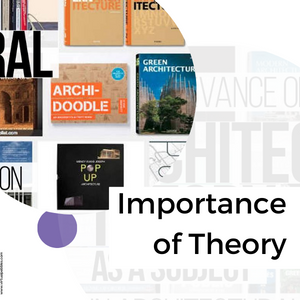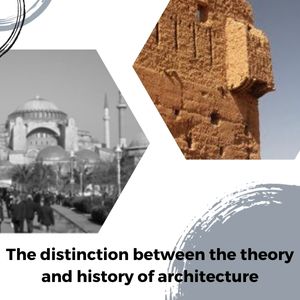Announcement
Get Ready for INDUS CUP 2K26! | Dates: 5–10 January 2026 | Stand a Chance to Win Cash Prizes up to ₹10,00,000!...Read more Get Ready for INDUS CUP 2K26! | Dates: 5–10 January 2026 | Stand a Chance to Win Cash Prizes up to ₹10,00,000!
We are excited to announce the Indus Hackathon 2025, an exhilarating one-day event organized by the CSE Department of Indus University....Read more We are excited to announce the Indus Hackathon 2025, an exhilarating one-day event organized by the CSE Department of Indus University.
26th ISTE Faculty Annual State Convention will be held at Indus University on April 27, 2023....Read more 26th ISTE Faculty Annual State Convention will be held at Indus University on April 27, 2023.
Get Ready for INDUS CUP 2K26! | Dates: 5–10 January 2026 | Stand a Chance to Win Cash Prizes up to ₹10,00,000!...Read more Get Ready for INDUS CUP 2K26! | Dates: 5–10 January 2026 | Stand a Chance to Win Cash Prizes up to ₹10,00,000!
We are excited to announce the Indus Hackathon 2025, an exhilarating one-day event organized by the CSE Department of Indus University....Read more We are excited to announce the Indus Hackathon 2025, an exhilarating one-day event organized by the CSE Department of Indus University.
26th ISTE Faculty Annual State Convention will be held at Indus University on April 27, 2023....Read more 26th ISTE Faculty Annual State Convention will be held at Indus University on April 27, 2023.

Due to the quasi-philosophical nature of the architectural profession and its link with non-physical components like the humanities, architecture needs to have the well-documented, systematic pre-existing system of knowledge that other professions like medicine and law have. Because of its formalised nature, architectural theory has the potential to transform practice into a measurable social indicator. Yet, theories are frequently misunderstood as normative declarations that limit innovation, subjective claims that lack applicability, or even as dogmas rooted in a tradition. The truth is that architectural theories might be a positive assertion, a model, a hypothesis, or a directive for action.
Frank Llyod Wright famously said, "The circumference of architecture is evolving, but the centre remains unchanged." This remark implies that architectural theory is the centre of architectural activity, while the range of practice and ideals form its perimeter. Beginning with Vitruvius' De Architectura or his magnum work, the theoretical treatise in architecture has a two-millennium-old heritage. The broad range of facets of this multi-discipline is covered by architectural theory, which includes explaining or criticising architectural works, providing practice instructions or guidelines, advocating for new design methodologies and approaches, conducting research in previously unexplored areas of architecture, outlining conceptual underpinnings, developing philosophical insights, and identifying difficulties in architectural education and practice.
Architectural theory is a key to dispelling confusion because it helps students have a clear understanding of the facts that make up an architectural design, how to classify them, and how they relate to one another. This helps students think more logically and develop mature architectural solutions because it gives them a clear sense of what they are trying to accomplish in their work. The success of the thoughts and deeds will be increased with the support of a solid theory in a time when there are more and more architecture schools and graduates. As a result, uniqueness or distinctiveness is of utmost importance.


The most popular activity for developing the creative instincts of aspiring architects is to look through case studies that only provide learning that is focused on vision. The leading cause of architects' need for more interest in reading and writing about architecture is the rising need for visual and graphical communication in academic settings. For architects and architecture students, reading academic books and essays is the finest method to grow intellectually. In order for architectural designs to appeal to a wide range of people, it is necessary to broaden the theoretical field, look for all-encompassing theories, and create appropriate standards for evaluating the viability of architectural theories. Architectural theory should therefore be an essential subject covered in the curriculum.
Architects are viewed less as "calculated creative curators" and more as "trained technicians" in contemporary society. A scientist with a touch of art is now more commonly used to describe them than artists with a touch of science due to the growing influence of the science and technology industries. The underlying theories are pushed to the back of the architecture book's opening page, which is emphasised in terms of aesthetics. In this country, architectural education is a worry due to the shifting demands and objectives. In order to identify specificity, architecture should be acknowledged as a "specialist field" and as such. In order to practise the field in a way that is consistent with the theory and to really justify the profession, the same essential principles must be applied.


There must be a neutral point between this clamour of preferences between theory and practice, nevertheless, as the times reveal themselves. They must coexist in any design for a harmonic blending of techniques, teachings, and ultimately the eternal result in order to avoid "Architectural Failure". To move this community ahead, the significant shift from theory to practice must be re-established. The theoretical foundation of architecture must be addressed to promote proper architectural practises beyond aesthetics and prevent misunderstandings regarding the practises. We must therefore gather ourselves from the various paths into the objectively defined idealistic architectural practice in order to bring this off-centred practice closer to its core. We must consider the traditional and successful goals in the context of modern methods.